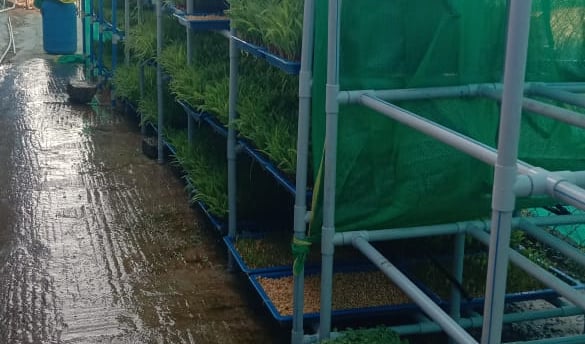
Smart Fodder Station
In the vast landscape of agriculture, where the rhythm of seasons and the well-being of livestock shape the livelihoods of farmers, innovation stands as a beacon illuminating the path to a more sustainable and efficient future. This chapter delves into the evolving world of livestock feeding practices and introduces the concept of Smart Fodder Technology as a transformative force in modern farming.
3/21/20242 min read


Introduction to Smart Fodder Technology
In the vast landscape of agriculture, where the rhythm of seasons and the well-being of livestock shape the livelihoods of farmers, innovation stands as a beacon illuminating the path to a more sustainable and efficient future. This chapter delves into the evolving world of livestock feeding practices and introduces the concept of Smart Fodder Technology as a transformative force in modern farming.
The Evolution of Livestock Feeding Practices
Traditionally, livestock feeding has followed age-old methods passed down through generations. Farmers relied on natural grazing, cultivated fields for hay production, and silage for supplemental nutrition during lean periods. While these practices served their purpose, the demand for higher yields, better nutrition, and consistent feed availability prompted a shift towards innovation.
The Rise of Smart Fodder Technology
Enter Smart Fodder Technology, a paradigm shift in the way we approach fodder production for livestock. This innovative approach combines the principles of hydroponics with cutting-edge automation, offering farmers a reliable and efficient method to cultivate nutrient-rich fodder. The integration of technology into agriculture has not only addressed the shortcomings of traditional methods but has also opened new possibilities for optimizing farm productivity.
Technology's Impact on Modern Farming
As we stand at the intersection of agriculture and technology, the impact is profound. Smart Fodder Technology represents a marriage of agricultural expertise and technological advancement. The use of hydroponic techniques, where plants grow without soil, allows for precise control over nutrient delivery, ensuring optimal absorption for healthier and more productive crops.
The Need for Transformation
The introduction of Smart Fodder Technology is not merely a matter of convenience; it is a response to the pressing needs of modern agriculture. With a growing global population and increasing demands for sustainably sourced products, farmers are challenged to produce more with fewer resources. Smart Fodder Stations offer a solution by maximizing the efficiency of fodder production, contributing to a more sustainable and economically viable future for livestock farming.
Benefits of Smart Fodder Technology
The advantages of embracing Smart Fodder Technology are multifaceted. By providing a controlled environment for fodder growth, farmers can ensure a consistent supply of high-quality feed throughout the year. The automation features streamline the feeding process, reducing labor costs and minimizing the risk of feed shortages. Livestock, in turn, benefits from a nutritionally optimized diet, leading to improved health, higher milk production, and enhanced overall well-being.
In conclusion, this chapter sets the stage for a journey into the realm of Smart Fodder Technology—a journey that transcends the boundaries of conventional farming practices. As we explore the intricacies of hydroponics, automation, and the transformative impact on livestock health, we invite farmers like Arjun Patel to unlock the potential of this innovative approach and shape the future of their farms. Smart Fodder Technology is not merely a tool; it is a key that opens the door to a more sustainable and prosperous era in agriculture.
